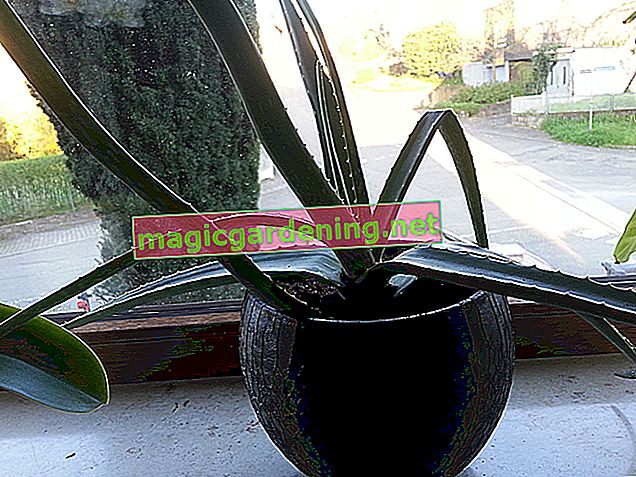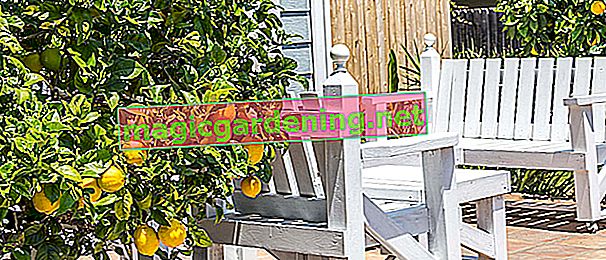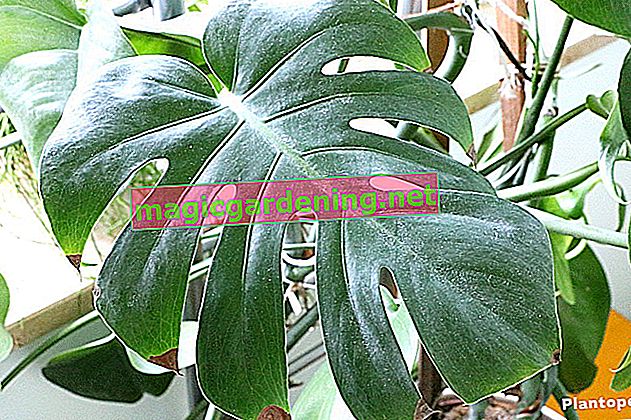
Plant autumn asters correctly
Planting time for autumn asters is already in spring so that they are well rooted by the beginning of flowering. Assign the perennials to a sunny spot so that you can dig small pits at a distance of 20-60 cm, depending on the variety. Put the root balls soaked in water into the soil until just below the first pair of leaves. It is advantageous to enrich the excavation with compost and horn shavings. (€ 6.39 at Amazon *) Press the earth down with your hands, water extensively and mulch.
also read
- Floral ambassadors of summer garden joy - the easy-care snapdragons
- Asters paint blooming garden pictures in all seasons
- Fuchsias inspire with an extremely long flowering time
Care tips
Herbstastern have a reputation for being completely undemanding. The following care program provides convincing evidence of this image:
- Keep the soil constantly slightly moist
- Regularly mulch with leaves or lawn clippings from April to July
- Fertilize organically or in liquid form from August to mid-October
- Clean off dead flowers every few days
After the first frost, cut the perennials back to their native foliage. In winter regions, cover the root disc with leaves and needles. Potted flowers move to frost-free, bright winter quarters.
Which location is suitable?
When autumn asters open their flowers, the days have already become noticeably shorter. So that the perennials can develop their full flower potential so late in the year, a sunny and warm location is essential. Only the autumn-blooming forest aster (Aster cordifolius) tolerates a place in partial shade. Choose a location with fresh, moist soil that is rich in nutrients and well-drained.
Cut autumn asters correctly
When the first flower heads have wilted, your autumn asters are far from finished their flowering season this year. If you cut off the flowers, you can see the buds underneath, waiting. Only after the first frost there is no longer any prospect of fresh flowers. Now cut the perennial by a third. The remaining leaves linger until early spring, only to be cut off near the ground.
Water autumn asters
After planting autumn asters in spring, guide them through the summer with regular watering. The soil and the potting soil should just as little dry out as water. Frequent watering in the bed is unnecessary during rainy autumn weather. Otherwise, continue the water supply when it is dry, which is maintained when it is freezing in winter.
Fertilize autumn asters properly
With an organic nutrient supply, you give autumn asters the right momentum for a vital, long flowering period. How to do it right:
- After the spring planting, mulch regularly with leaves or grass clippings
- From August to mid-October, fertilize every 2-3 weeks with compost, horn shavings or bark humus
- In addition, shower the floor with comfrey liquid manure
In the pot and balcony box, the nutrient stocks of the pre-fertilized substrate cover the need until the beginning of the flowering period. From August to mid-October, apply a liquid fertilizer every 2 weeks or apply a single fertilizer stick (€ 1.45 at Amazon *) with long-term effects.
Overwinter
Autumn asters are tough. This not least affects their stamina during the cold season. At the end of the flowering period, cut the perennials back by a third to cover them with autumn leaves or pine fronds. The remaining leaves serve as additional winter protection until early spring. Please cut these close to the ground in good time before the new shoot.
Propagate autumn asters
You can easily multiply your most beautiful autumn asters by dividing the root ball. A well-chosen time is spring, when no more ground frosts are to be expected. Lift the perennial out of the ground and use a knife or spade to cut it into segments with at least 2 buds each. Alternatively, sow the seeds on the windowsill in February / March. At 18-20 degrees Celsius, the seeds germinate within 2-4 weeks. Propagation of cuttings is also conceivable, but comes with a comparatively high failure rate of 40-50 percent.
Autumn asters in the pot
In a pot, autumn asters can also bring the garden year to a colorful end on the balcony and terrace. Please ensure that you have a regular water supply, as the substrate dries out faster than garden soil. A liquid fertilizer covers the nutritional requirements every 2 weeks. The application of fertilizer ends by mid-October at the latest so that the beauties of the flowers prepare for the coming winter season. After the first frost, shorten the flowers by a third. Please move planters with a diameter of less than 30 cm to the bright, frost-free winter quarters. Large buckets have a winter coat made of fleece, jute or foil and a warm wooden base. The substrate is covered with autumn leaves and coniferous branches.
Are autumn asters poisonous?
Autumn asters are the ideal candidates to wave off the blooming garden year in the family garden. The daisy family are not poisonous, so there is nothing against cultivation within reach of children or pets. In fact, the pretty star blossoms are even edible and serve as floral food decorations in natural kitchens.
Nice varieties
There is a whole series of magnificent asters that light up autumn with their rich flower colors. Browse through a selection of the most beautiful varieties of dainty pillow asters (Aster dumosus), majestic rough-leaf asters (Aster novae-angliae), elegant smooth-leaf asters (Aster novae belgii) and late-blooming Tatar asters (Aster tataricus) all sweeten the farewell to summer.
- Snow pillows: cute pillow aster with white flowers that stand out as a border, ground cover and potted flower; 15-20 cm
- Rose elf: The autumn-blooming pillow aster lives up to its name with its pink flowers; 20-25 cm
- Purple Dome: The sturdy, robust Raublatt aster in the autumn garden inspires with its dark purple flowers; 50-70 cm
- Pink winner: A majestic Aster novae-angliae with excellent sighting results; 120-140 cm
- Permanent blue: The historical smooth-leaf aster with its lilac-blue flowers attracts everyone's attention until December; 120-140 cm
- Beacon: With countless flowers in bright carmine red, this aster lets the perennial bed glow; 100-110 cm
- Jundaii: The Tatar aster blooms last in the autumnal aster dance and lasts until the first frost; 100-150 cm








